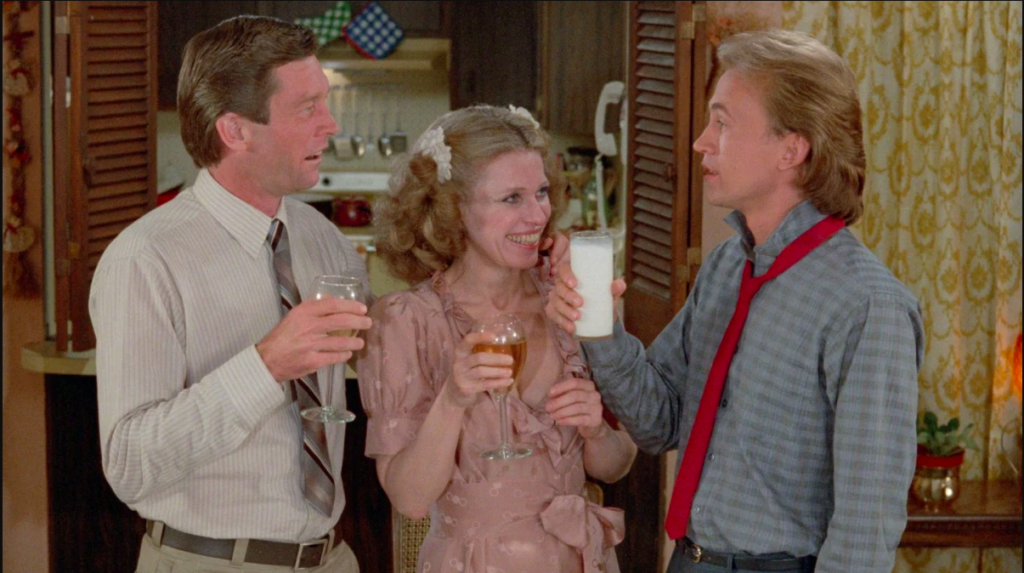“It’s not cranberry sauce Artie”

In 1974, Terry murdered a man with an axe at a drive-in theater while his brother Todd looked on in horror. Terry, wiping blood all over Todd, successfully framed his twin for the crime and Todd would spend the next ten years in an institution. Then, on Thanksgiving 1984, Todd (Mark Soper) escaped and came home, triggering Terry’s (Mark Soper) homicidal tendencies.
Blood Rage (1987) is a darkly comic take on the slasher film. Blood Rage features plenty of off-the-wall gore in addition to boasting one of the great synth soundtracks of the eighties. It’s a cult classic whose oddball humor and child-like villain make it easily accessible to viewers who aren’t devotees of the horror genre.
While the gross-out kills and practical effects are truly inspired, what makes Blood Rage an exceptional entry in the low-budget slasher genre are the performances that director John Grissmer elicits from his leads Mark Soper and Louise Lasser (who plays Todd and Terry’s mother). The performance that Soper gives as the psychotic Terry is a grotesquely funny perversion of “arrested development” that seems to afflict most serial killers in horror films. Soper hops up and down on a diving board and uses corpses as playthings while delivering lines like “You’re no fun” with childish sincerity.
Likewise Lasser’s portrayal of a mother wracked with guilt, suffering from loneliness and with a penchant for drink functions as satirization of another horror movie trope. But there’s a genuine pain present in Lasser’s performance that is at once deeply affecting and relatable while also being necessary for the climax of Blood Rage to have any impact. Lasser stumbles around her apartment drinking wine and cleaning late into the night channeling those lonely Thanksgiving holidays that we, the audience, have experienced or witnessed at least once in our lives.
But Blood Rage is first and foremost a slasher film concerned with the spectacle of bodily mutilation. In this arena it excels, primarily due to screenwriter Bruce Rubin’s sense of dramatic economy. In some instances murders are implied rather than shown but the aftermath of the slaughter is revealed later with shocking effect. Rubin also embraces the theme of “sex equals death” of the slasher film to such an extreme that it becomes an almost reflexive strategy that points to the plasticity of its grisliness.
Blood Rage is top of the heap in terms of unconventional holiday movies. It’s an annual favorite for horror fans when Thanksgiving comes around and should be a yearly ritual for any cinephile. Personally I rank Blood Rage alongside The Ice Storm (1997), Nobody’s Fool (1994) and The Daytrippers (1997) as one of the four great Thanksgiving movies.
